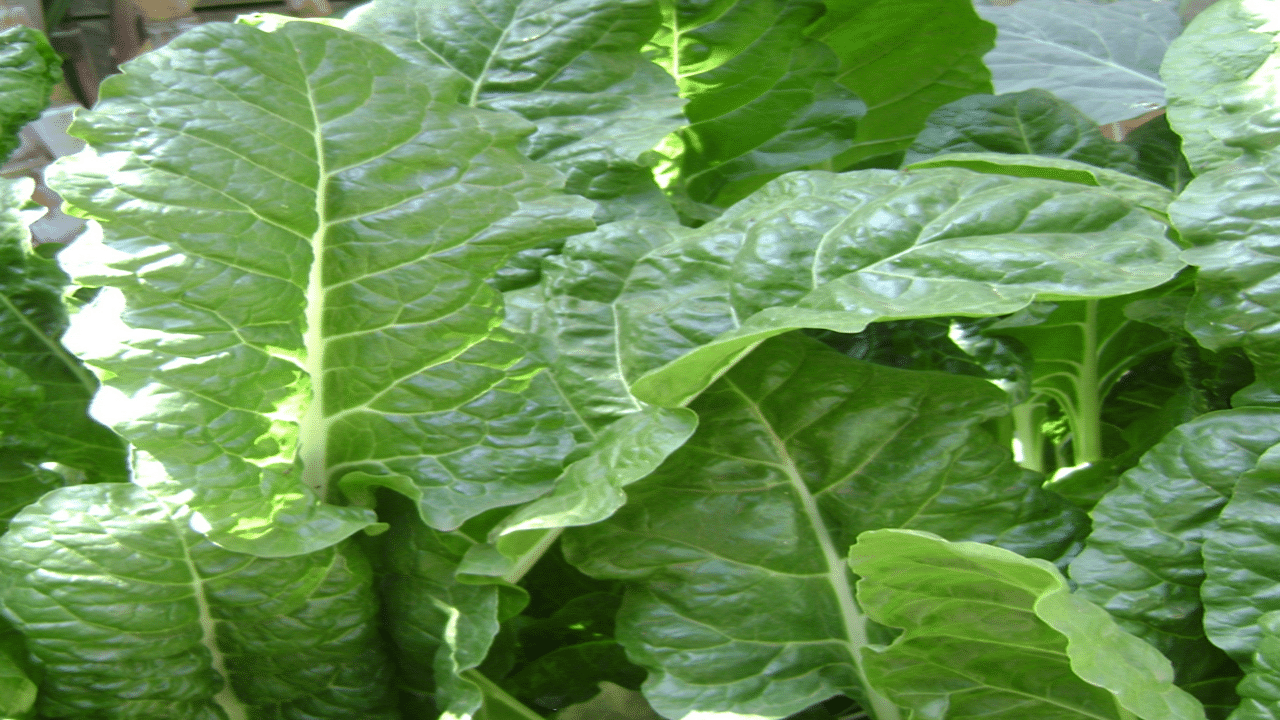
Spinach is widely recognized as a superfood due to its numerous health benefits. It is rich in zeaxanthin and carotenoids, which help eliminate free radicals from the body. With its high potassium content, spinach is recommended for individuals with high blood pressure. Moreover, its abundance of vitamin A protects against cataracts, age-related macular degeneration, and other eye ailments, while also fortifying respiratory and intestinal tracts and mucous membranes.
Additionally, the iron and folic acid in spinach aid in preventing anemia. Hence, including spinach in one's diet can contribute significantly to overall health and well-being. The top spinach-producing states in India include Maharashtra, West Bengal, Gujarat, Andhra Pradesh, Telangana, Kerala, Tamil Nadu, Karnataka, and Uttar Pradesh.
Nutritional Benefits of Spinach
Spinach offers a nutrient-rich profile with 2.0 g of protein, 0.7 g of fat, and 0.6 g of fibers per 100g serving. It provides 2.9 g of carbohydrates and 26 kcal of energy. Rich in vitamins, spinach contains high levels of Vitamin A (5580 µg/100g), Vitamin B2 (0.26 mg/100g), and Vitamin C (28 mg/100g), along with essential minerals like iron (1.14 mg/100g), calcium (73 mg/100g), and phosphorus (21 mg/100g).
Sowing
Spinach can be planted throughout the year using either line sowing or broadcasting methods. In spring, these are grown between mid-February to April. Spinach plants should be spaced 25-30 x 5-10 cm apart. In the winter, one may use 4-6 kg of seeds per hectare, while in the summer, it can be increased to 10-15 kg per hectare. These simple guidelines help farmers grow the crop effectively, adjusting to different seasons and maximizing yields.
Field Preparation and Irrigation
To ensure even bed formation, plow the soil 2-3 times before leveling it thoroughly. For this, drip or sprinkler irrigation methods are preferred. Initial irrigation should be done right after sowing, followed by subsequent irrigation every 4-5 days in summer and every 10-12 days in winter to maintain soil moisture effectively.
To optimize spinach crop growth, ensure adequate soil fertility with nitrogen at 35 kg/ha, phosphorus at 12 kg/ha, and organic matter from FYM at 10 t/ha. These nutrient levels support healthy plant development and improve overall yield potential, contributing to successful spinach cultivation. For weed control in spinach farming, apply pre-emergent herbicide Pyrazone at 2-2.5 kg/ha.
Varieties of Spinach
Pusa Harit
Ideal for cultivation in hill regions year-round, this variety boasts upright, vigorous plants with thick green, slightly crinkled, and oversized leaves. Known for its heavy yield and remarkable rejuvenation capabilities, it consistently produces an average yield of 150-200 quintals per hectare. Its late bolting habit ensures prolonged harvesting periods, while its adaptability to diverse climates further enhances its appeal. With these characteristics, it stands as a reliable and versatile option for farmers in hilly areas, ensuring consistent production and sustainability without compromising originality.
Arka Anupama
This is a variety of spinach known for its multi-cut type, late flowering, and medium-large size. Its dark green, thick, and succulent leaves are notable for their low oxalate content, making it a preferred choice for health-conscious consumers. With a yield potential of 40t/ha from 4 cuttings within 75-80 days, Arka Anupama is a promising option for cultivation in Karnataka. Its robust characteristics and high productivity make it a valuable addition to vegetable crops, offering farmers an opportunity for profitable cultivation.
Pusa Jyoti
It offers exceptional productivity, providing 6-8 cuttings and yielding an impressive 290 quintals per hectare. Developed as a polyploid through selective breeding with colchicine-treated progenies of All Green, it features giant, succulent, and crisp leaves. With its remarkable yield potential of 490 quintals per hectare from 6-7 cuttings, it stands out as a high-performance option. Rich in potassium, calcium, sodium, iron, and ascorbic acid, it offers nutritional benefits and can be cultivated year-round. This versatile variety ensures consistent and bountiful harvests while presenting a wealth of essential nutrients, maintaining originality throughout.
Punjab Green
The Punjab Green features foliage characterized by its shiny dark green color, thickness, length, sweetness, succulence, and absence of sourness. Additionally, a light purple pigment adorns the stem, enhancing its visual appeal. With an average yield of 315 quintals per hectare, it proves to be a productive choice for growers. Notably, it exhibits a slow bolting tendency, prolonging the harvesting period. Moreover, its low oxalic acid content is a desirable trait, particularly for greens. These attributes collectively contribute to its appeal as a high-quality option for cultivation, ensuring both productivity and palatability while maintaining originality in content.
Banerjee Gaint
This highly popular variety originates from West Bengal and was developed through hybridization between Local Palak and Sugar Beet. Known for its widespread popularity, it yields an impressive quantity of green leaves, ranging from 150 to 200 quintals per hectare. This variety's successful breeding and substantial yield make it a favored choice among farmers, offering both productivity and adaptability to regional conditions without compromising originality.
Plant Protection
To manage insect pests and diseases in spinach crops, a combination of cultural and chemical methods is essential. Avoiding excessive nitrogen use and utilizing NSKE 4% spray helps control leaf miners and other pests. Yellow sticky traps monitor and trap spinach crown mites and Amaranthus weevil, while NSKE 4% spray targets caterpillars and beet armyworms.
Trichogramma spp. release combats cutworm infestations, and aphids can be controlled with monocrotophos spray. For fungal diseases like downy mildew, avoiding chemical sprays and encouraging larval parasitoids' activity is crucial. Regular harvesting and cutting of leaves minimize anthracnose spread, while residue incorporation into the soil after seed crop harvest helps manage Cladosporium and Stemphylium leaf spots. Handpicking caterpillars and cocoons and destroying them in kerosene mixed water assists in preventing damping off and root rot. These integrated pest and disease management practices ensure spinach crop health and productivity.
Harvesting
Spinach is ready for its first cutting at 25-30 days after sowing (DAS), followed by subsequent cuttings every 20-25 days. With an average yield of 80-100 quintals per hectare, this harvesting schedule ensures a consistent and sustainable production cycle, promoting efficiency and profitability in cultivation practices.










